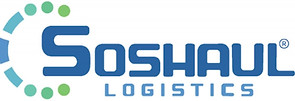URS vs. UCR - What's The Difference and How Do I Register For Each?
- Samantha Allen & Dr. Sean Goffnett

- May 11, 2023
- 5 min read
Updated: Oct 30, 2023
The trucking industry is highly regulated, and it's easy to get confused by all of the acronyms and regulations. Two commonly mistaken procedures are the Unified Registration System (URS) and Unified Carrier Registration (UCR). While both of these involve the registration of commercial motor vehicles and the companies that operate them, they serve different purposes and have different processes.

In this blog, we'll describe the difference between URS and UCR, and how to utilize each of them. We'll also explain why it's important for trucking businesses to stay up-to-date with the latest regulations and requirements, and how compliance can help ensure the safety and success of your business. So if you're a carrier, broker, or freight forwarder, keep reading to learn more about URS and UCR and how to navigate the registration process.
What Is the Unified Registration System (URS)?
New CDL holders, future truck drivers, and owner-operators will definitely want to become familiar with URS. The Unified Registration System (URS) is an online federal registration system that facilitates the registration of commercial motor vehicles (CMVs) and the drivers and companies that operate them. It is an electronic online registration system that streamlines the Federal Motor Carrier Safety Administration's (FMCSA) registration process and serves as a clearinghouse and depository of information on all major entities regulated by the Agency.
The URS is designed to make it easier for businesses to register and maintain their registration, while also improving safety and compliance in the trucking industry.
How to Register using the Unified Registration System
If you are a carrier, freight forwarder, broker, or other entity involved in the transportation of goods, you may be required to register with the FMCSA using the URS online system. Here are the steps to register using the URS:
Step 1: Determine if you need to register
Registering with FMCSA applies to all entities that operate CMVs in interstate commerce. This includes carriers, brokers, and freight forwarders. If you are not sure if you need to register, you can visit the FMCSA website to learn more about the registration requirements.
Step 2: Obtain a USDOT Number
Visit the FMCSA online registration system, the URS, to apply for a USDOT Number. This is a unique identifier that is assigned to your business by the FMCSA. You will need to provide information about your business (EIN), including your legal name, address, and type of operation. The FMCSA will use your DOT number as an identifier when they record and monitor your company's safety information.
Step 3: Obtain an MC Number (as needed)
While in the URS, you will be asked if you want or need an operating authority, i.e., an MC Number. You need an Operating Authority (MC number) if you plan to transport passengers or federally-regulated commodities owned by others, or arranging for their transport, for compensation in interstate commerce. This requires process agents (BOC-3) and public liability insurance (MCS-90). Each operating authority will cost $300.
Step 4: Receive Your DOT Number and MC Number
Once your initial application is filled out and completed in the URS, you will be issued a DOT Number. If you needed an Operating Authority (MC Number) for transporting passengers or products across state borders, then once the FMCSA public protest period has ended, your list of process agents and insurance are on record, and fees have been processed, you will receive your Operating Authority making your MC Number issued in the URS portal official. You will need to display your USDOT Number on all of your commercial motor vehicles, and you may also need to display your MC Number on certain vehicles.
What is the Unified Carrier Registration (UCR)?
The Unified Carrier Registration (UCR) is a federally-mandated system for registering commercial motor carriers engaged in interstate travel in the United States. The UCR program was created by the U.S. Congress as part of highway funding legislation and is administered by the Federal Motor Carrier Safety Administration (FMCSA).
Under the UCR program, motor carriers must register and pay an annual fee based on the number of commercial motor vehicles they operate. The fees collected are used to support state motor carrier safety programs and enforcement efforts. The UCR program applies to all for-hire and private motor carriers, as well as brokers, freight forwarders, and leasing companies that operate commercial motor vehicles in interstate commerce.
How to Register for the Unified Carrier Registration
The UCR program is a national registration system for motor carriers, which replaces a complicated single state registration process. The UCR supports programs that help ensure that all motor carriers operating in interstate commerce are held to the same standards of safety and compliance.
Here is a step-by-step guide to registering for UCR:
Step 1: Determine if you need to register
Check if you are required to register for UCR by visiting the UCR website and reviewing the registration requirements. If you need an Operating Authority (MC Number), then chances are you need to register with UCR because the requirements are similar.
Step 2: Create an account and register
Create an account in the UCR system by providing your DOT number, contact information, and company details. You will enter your carrier classification and the number of commercial motor vehicles you operate. The system will calculate your fees for you based on the number of commercial motor vehicles you entered.
Step 3: Pay fees
In the registration portal, you will pay your UCR fees online using a credit card or other accepted payment method (you also have the option to mail them in). You must pay your UCR fees in full before your registration is complete.
Step 4: Receive confirmation
After your registration is processed and your fees are paid, you will receive a receipt or confirmation letter from the UCR program indicating that your registration is complete.
Step 5: Keep proof of registration
Once you receive your confirmation, keep proof of registration in your commercial motor vehicles by maintaining a copy of the registration completion letter or receipt.
If you are a trucking business owner, it is important to stay up-to-date with the latest regulations and requirements for operating in the industry. By registering for the UCR and URS, you can ensure that your business is in compliance with federal regulations and avoid potential fines and penalties.
There are two major choices when it comes to starting your professional driving career – starting your own trucking business or working as a company driver. There are multiple ways to start your trucking business with different levels of investment, risk, pay, and support. It should be clear by now that it takes a definitive plan.
If you or someone you know would like to learn more, share this blog with them! We cover a variety of topics related to starting, operating, and growing a trucking business as well as free resources, digital products, and comprehensive courses.
Ready to START, DRIVE, & ACCELERATE your trucking business? Check out our course here!

Interested in being notified when more free resources are available? Subscribe down below and you'll be the first to know!
Soshaul Logistics LLC and its affiliates do not provide tax, legal or accounting advice. This material has been prepared for informational purposes only, and is not intended to provide, and should not be relied on for, tax, legal or accounting advice. It is meant to serve as a guide and information only and Soshaul Logistics, LLC - Copyright 2023 - does not assume responsibility for any omissions, errors, or ambiguity contained herein. You should consult your own tax, legal and accounting advisors before engaging in any transaction or operation.




Comments